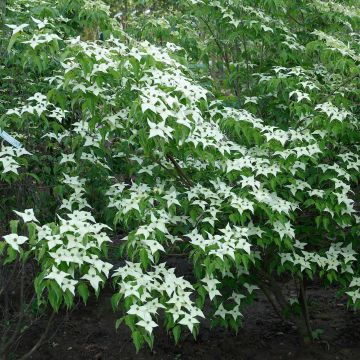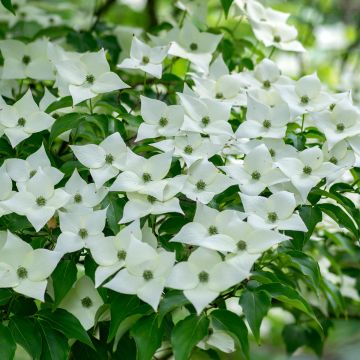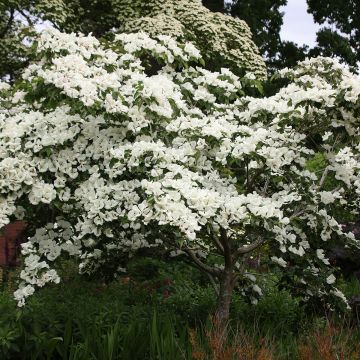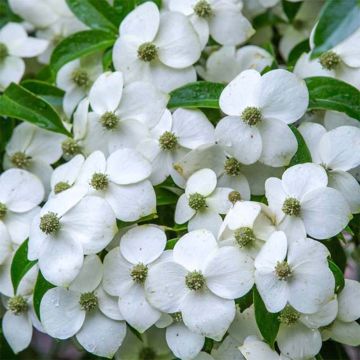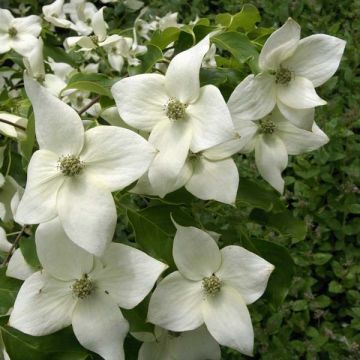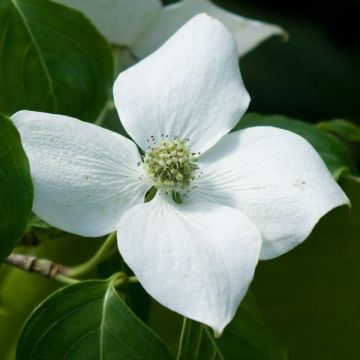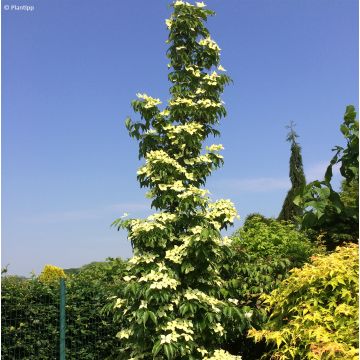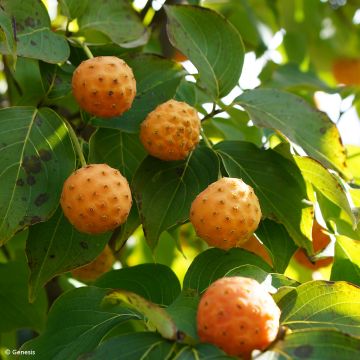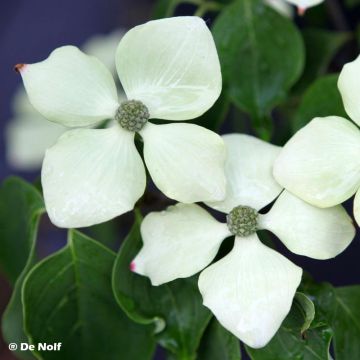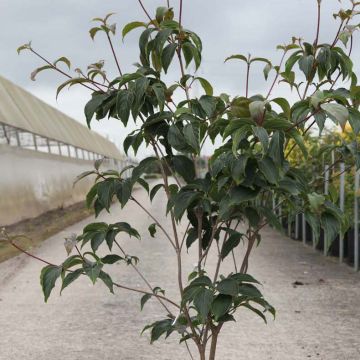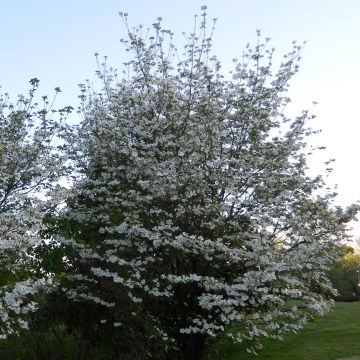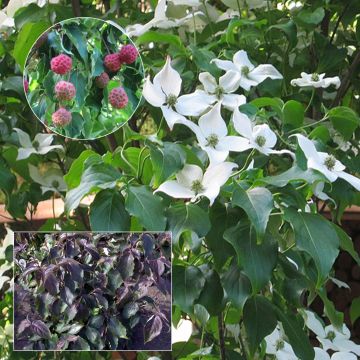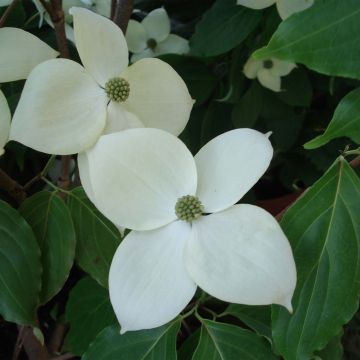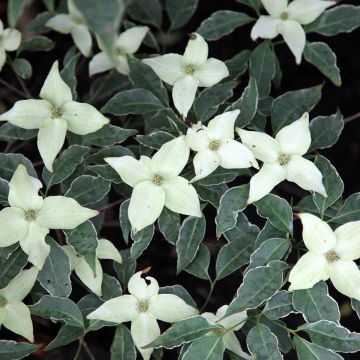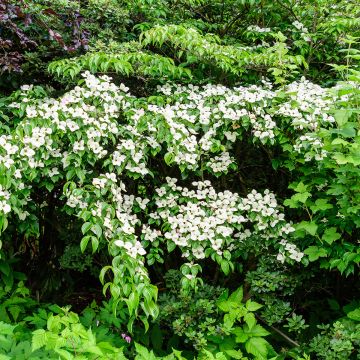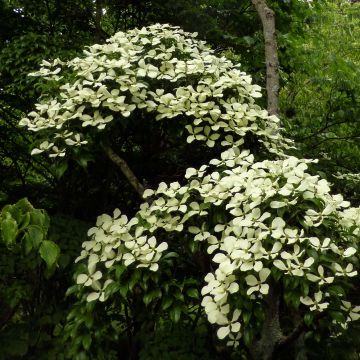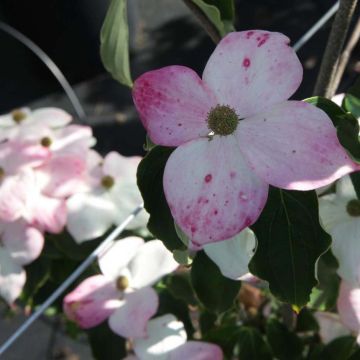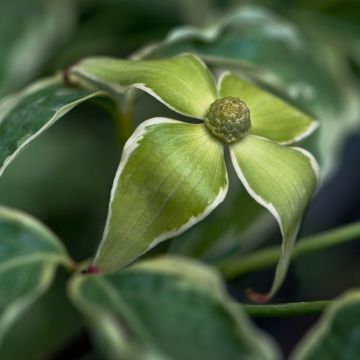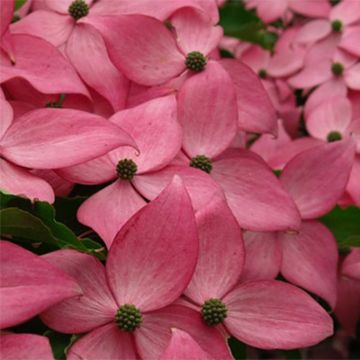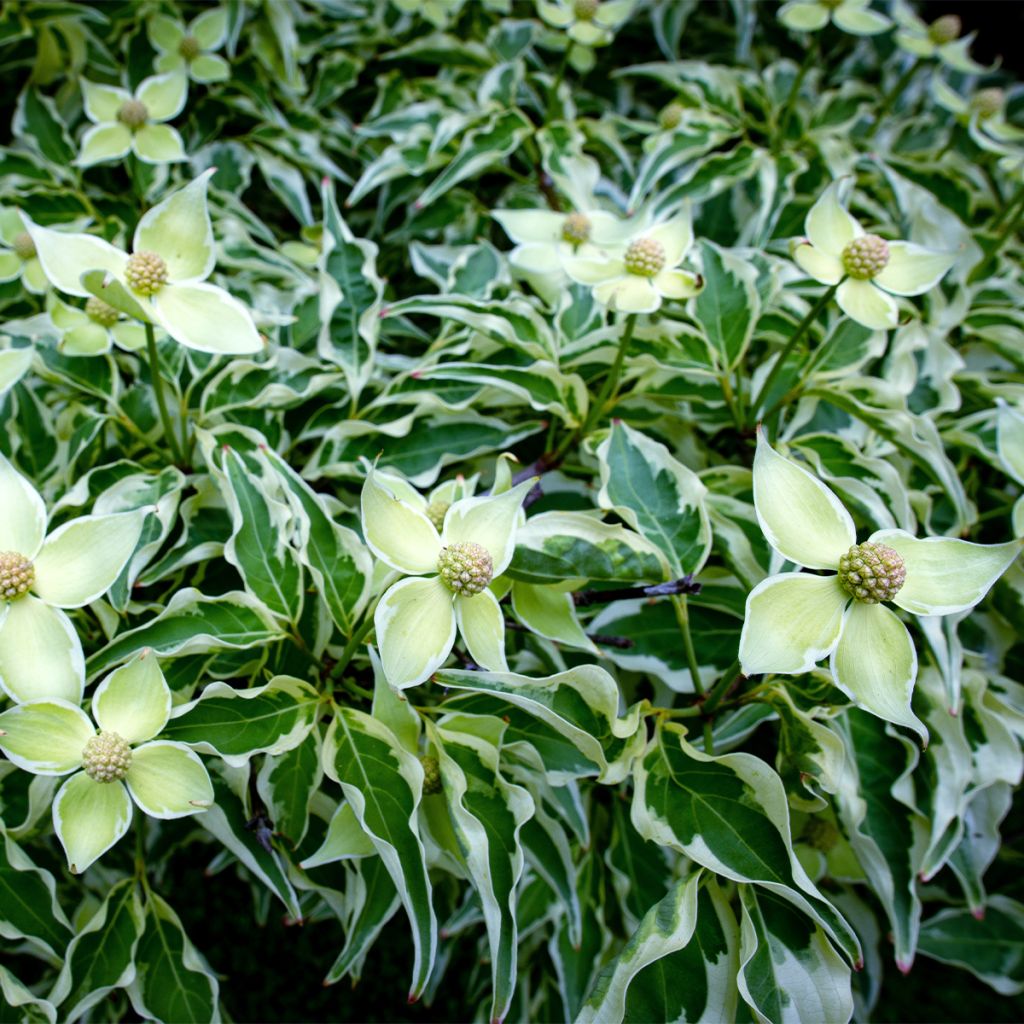

Cornus kousa Laura - Flowering Dogwood
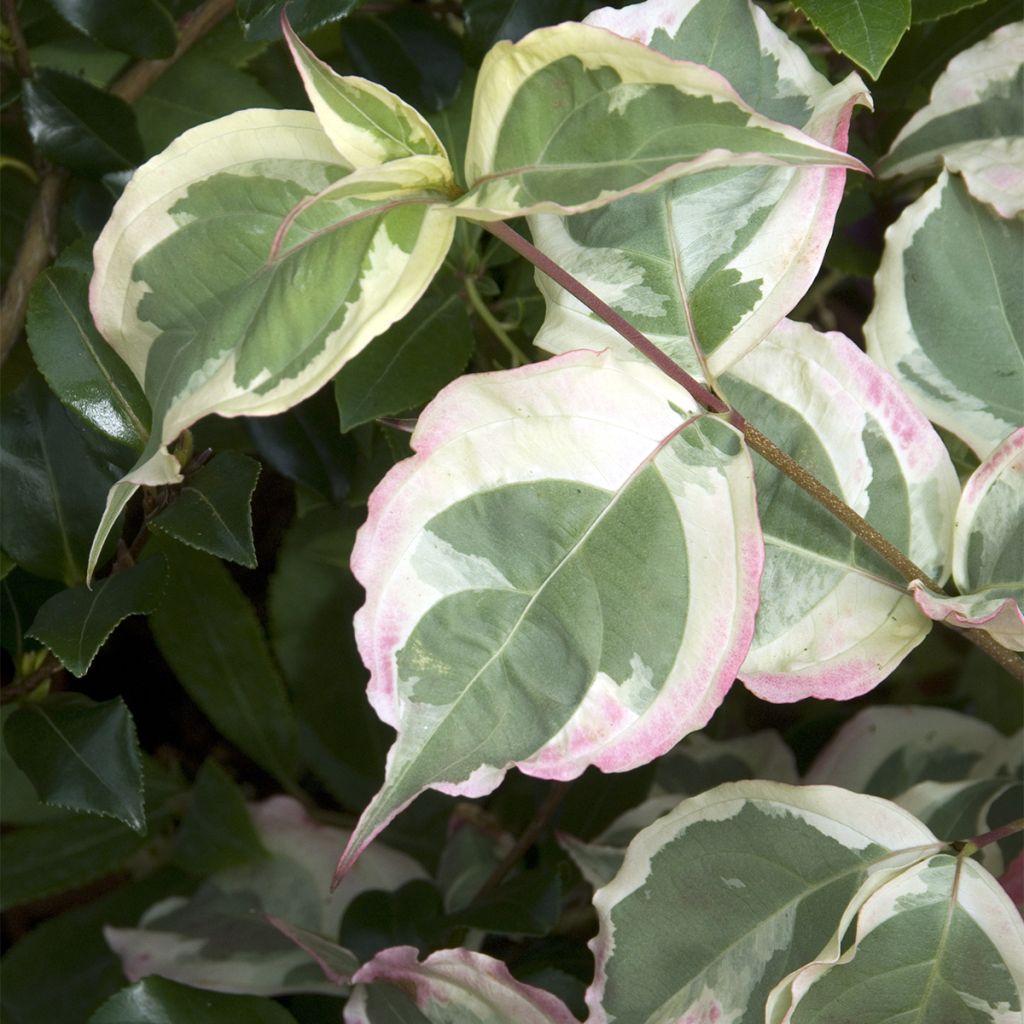

Cornus kousa Laura - Flowering Dogwood
Cornus kousa Laura - Flowering Dogwood
Cornus kousa Laura
Kousa Dogwood, Japanese Dogwood, Chinese Dogwood
Why not try an alternative variety in stock?
View all →This plant carries a 24 months recovery warranty
More information
We guarantee the quality of our plants for a full growing cycle, and will replace at our expense any plant that fails to recover under normal climatic and planting conditions.
From €5.90 for pickup delivery and €6.90 for home delivery
Express home delivery from €8.90.
Does this plant fit my garden?
Set up your Plantfit profile →
Description
Cornus kousa 'Laura' is a very original and bright variety, with variegated leaves and flowers. It is a bush with an airy, upright habit and branches gracefully spread in layers, which are particularly striking when uncovered by winter cold. Plant it in isolation, near a window or terrace to admire its magnificent structure in all seasons. The leaves are green with white cream edges, infused with bright pink, red and purple in autumn. From May to June, this bush produces smaller flowers than other varieties, with creamy white bracts tinged with green, enhanced by pure white margins, followed by a fruiting of small edible and decorative, red-pink strawberries. It is a particularly useful bush for illuminating a dark corner of the garden in well-drained, rich, moist soil, preferably without limestone.
Cornus kousa is a small tree or large bush, native to Japan, China, and Korea. Its architectural silhouette, supported by layered and horizontal branches, gives it a Japanese-like appearance. After many years of research and intense selection and hybridization work, the variety 'Laura' is an original horticultural hybrid with variegated foliage and flowers. This cultivar develops an airy, upright to spreading habit, reaching 3 m (9 ft 10 in) in all directions after many years. Despite its slow growth, it is a robust and easy-to-grow bush as long as it receives morning or evening non-scorching sun and is in well-drained, fertile and limestone-free soil.
'Laura' blooms in May-June, from 3 to 4 years onwards. The bush is adorned with a multitude of small 'flowers', which are actually inflorescences. These are clusters of small true, green flowers surrounded by 4 oval and pointed bracts, like leaves, arranged in stars, creamy white with a touch of green and pure white margins. They are arranged on the tree as if they were placed on the foliage. After the flowers, fruits appear measuring 2.5 cm (1 in) in diameter, ranging from pink to carmine red, and similar to strawberries. The higher the summer temperatures, the more abundant the fruiting. The fruits are edible, fleshy, with a sweet flavour, they do not have a real taste interest, but they enhance the charm of this large bush at the end of the season. 'Laura' has bright green leaves with white cream edges that turn bright pink on the margins and purple in the centre in autumn. The leaves of Cornus kousa are ovate, strongly veined and pendulous with undulating edges. They measure between 5 and 8 cm (2 and 3.1 in) long and are opposite each other along the branches.
Cornus kousa 'Laura' thrives in continental climates, with marked summers and winters, but also performs well in milder areas. In hot regions, it should be placed out of the scorching sun, in moist soil. This Japanese dogwood is still rare in gardens but very easy to grow once it has been carefully planted. It is a beautiful attraction alone and deserves to be planted in isolation, standing in the middle of a lawn for example. It will also be great at the back of a bed composed of ericaceous plants or shrubs with staggered flowering or evergreen foliage. Choose, for example, to accompany it with oakleaf or panicle hydrangeas, Japanese maples with purple foliage, symphoricarpos, a Cercis, a Fothergilla, or a Tetradium daniellii, the bee tree.
Report an error about the product description
Cornus kousa Laura - Flowering Dogwood in pictures
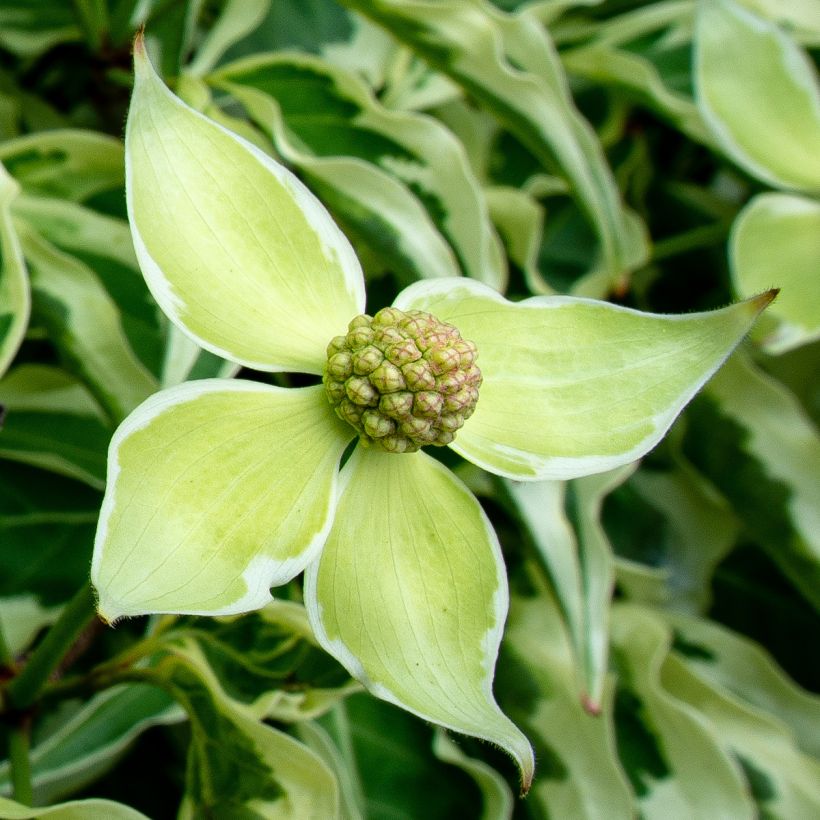

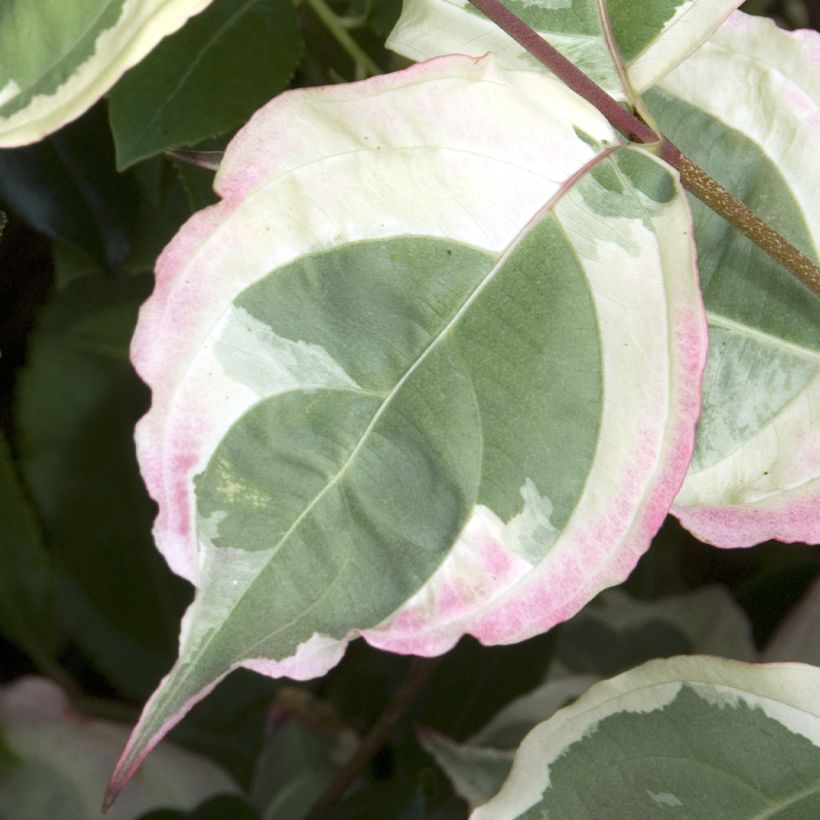

Plant habit
Flowering
Foliage
Botanical data
Cornus
kousa
Laura
Cornaceae
Kousa Dogwood, Japanese Dogwood, Chinese Dogwood
Cultivar or hybrid
Other Flowering Dogwood
Planting and care
Originally from Japan, Korea, and China, Cornus kousa thrives in continental climates and temperate zones. Extremely cold temperatures during winter can result in absent or reduced flowering. However, this bush is very hardy and can withstand frost of at least -15° (5°F). It tolerates sunny exposures in areas with moderately warm summers. In hot regions, it must be planted in a sheltered spot away from scorching sun.
It prefers deep, fertile, well-drained soils that are slightly acidic or neutral, but can tolerate some limestone. It tolerates clay soils as long as it is protected from excess moisture, especially in winter. Plant it in a deep hole lined with clay pellets, coarse sand, or gravel to ensure good drainage, necessary in very compacted soil. Any good, balanced, and loose garden soil is suitable. At planting, add compost and leaf mold. Mulching with pine bark will help maintain moisture and promote soil acidity.
Pruning is not essential but can be done at the end of winter to remove diseased or dead wood and crossing branches in order to maintain an attractive shape. During the first two years after planting, regular watering is required in summer, afterwards it can manage on its own.
Planting period
Intended location
Care
This item has not been reviewed yet - be the first to leave a review about it.
Haven't found what you were looking for?
Hardiness is the lowest winter temperature a plant can endure without suffering serious damage or even dying. However, hardiness is affected by location (a sheltered area, such as a patio), protection (winter cover) and soil type (hardiness is improved by well-drained soil).

Photo Sharing Terms & Conditions
In order to encourage gardeners to interact and share their experiences, Promesse de fleurs offers various media enabling content to be uploaded onto its Site - in particular via the ‘Photo sharing’ module.
The User agrees to refrain from:
- Posting any content that is illegal, prejudicial, insulting, racist, inciteful to hatred, revisionist, contrary to public decency, that infringes on privacy or on the privacy rights of third parties, in particular the publicity rights of persons and goods, intellectual property rights, or the right to privacy.
- Submitting content on behalf of a third party;
- Impersonate the identity of a third party and/or publish any personal information about a third party;
In general, the User undertakes to refrain from any unethical behaviour.
All Content (in particular text, comments, files, images, photos, videos, creative works, etc.), which may be subject to property or intellectual property rights, image or other private rights, shall remain the property of the User, subject to the limited rights granted by the terms of the licence granted by Promesse de fleurs as stated below. Users are at liberty to publish or not to publish such Content on the Site, notably via the ‘Photo Sharing’ facility, and accept that this Content shall be made public and freely accessible, notably on the Internet.
Users further acknowledge, undertake to have ,and guarantee that they hold all necessary rights and permissions to publish such material on the Site, in particular with regard to the legislation in force pertaining to any privacy, property, intellectual property, image, or contractual rights, or rights of any other nature. By publishing such Content on the Site, Users acknowledge accepting full liability as publishers of the Content within the meaning of the law, and grant Promesse de fleurs, free of charge, an inclusive, worldwide licence for the said Content for the entire duration of its publication, including all reproduction, representation, up/downloading, displaying, performing, transmission, and storage rights.
Users also grant permission for their name to be linked to the Content and accept that this link may not always be made available.
By engaging in posting material, Users consent to their Content becoming automatically accessible on the Internet, in particular on other sites and/or blogs and/or web pages of the Promesse de fleurs site, including in particular social pages and the Promesse de fleurs catalogue.
Users may secure the removal of entrusted content free of charge by issuing a simple request via our contact form.
The flowering period indicated on our website applies to countries and regions located in USDA zone 8 (France, the United Kingdom, Ireland, the Netherlands, etc.)
It will vary according to where you live:
- In zones 9 to 10 (Italy, Spain, Greece, etc.), flowering will occur about 2 to 4 weeks earlier.
- In zones 6 to 7 (Germany, Poland, Slovenia, and lower mountainous regions), flowering will be delayed by 2 to 3 weeks.
- In zone 5 (Central Europe, Scandinavia), blooming will be delayed by 3 to 5 weeks.
In temperate climates, pruning of spring-flowering shrubs (forsythia, spireas, etc.) should be done just after flowering.
Pruning of summer-flowering shrubs (Indian Lilac, Perovskia, etc.) can be done in winter or spring.
In cold regions as well as with frost-sensitive plants, avoid pruning too early when severe frosts may still occur.
The planting period indicated on our website applies to countries and regions located in USDA zone 8 (France, United Kingdom, Ireland, Netherlands).
It will vary according to where you live:
- In Mediterranean zones (Marseille, Madrid, Milan, etc.), autumn and winter are the best planting periods.
- In continental zones (Strasbourg, Munich, Vienna, etc.), delay planting by 2 to 3 weeks in spring and bring it forward by 2 to 4 weeks in autumn.
- In mountainous regions (the Alps, Pyrenees, Carpathians, etc.), it is best to plant in late spring (May-June) or late summer (August-September).
The harvesting period indicated on our website applies to countries and regions in USDA zone 8 (France, England, Ireland, the Netherlands).
In colder areas (Scandinavia, Poland, Austria...) fruit and vegetable harvests are likely to be delayed by 3-4 weeks.
In warmer areas (Italy, Spain, Greece, etc.), harvesting will probably take place earlier, depending on weather conditions.
The sowing periods indicated on our website apply to countries and regions within USDA Zone 8 (France, UK, Ireland, Netherlands).
In colder areas (Scandinavia, Poland, Austria...), delay any outdoor sowing by 3-4 weeks, or sow under glass.
In warmer climes (Italy, Spain, Greece, etc.), bring outdoor sowing forward by a few weeks.

































